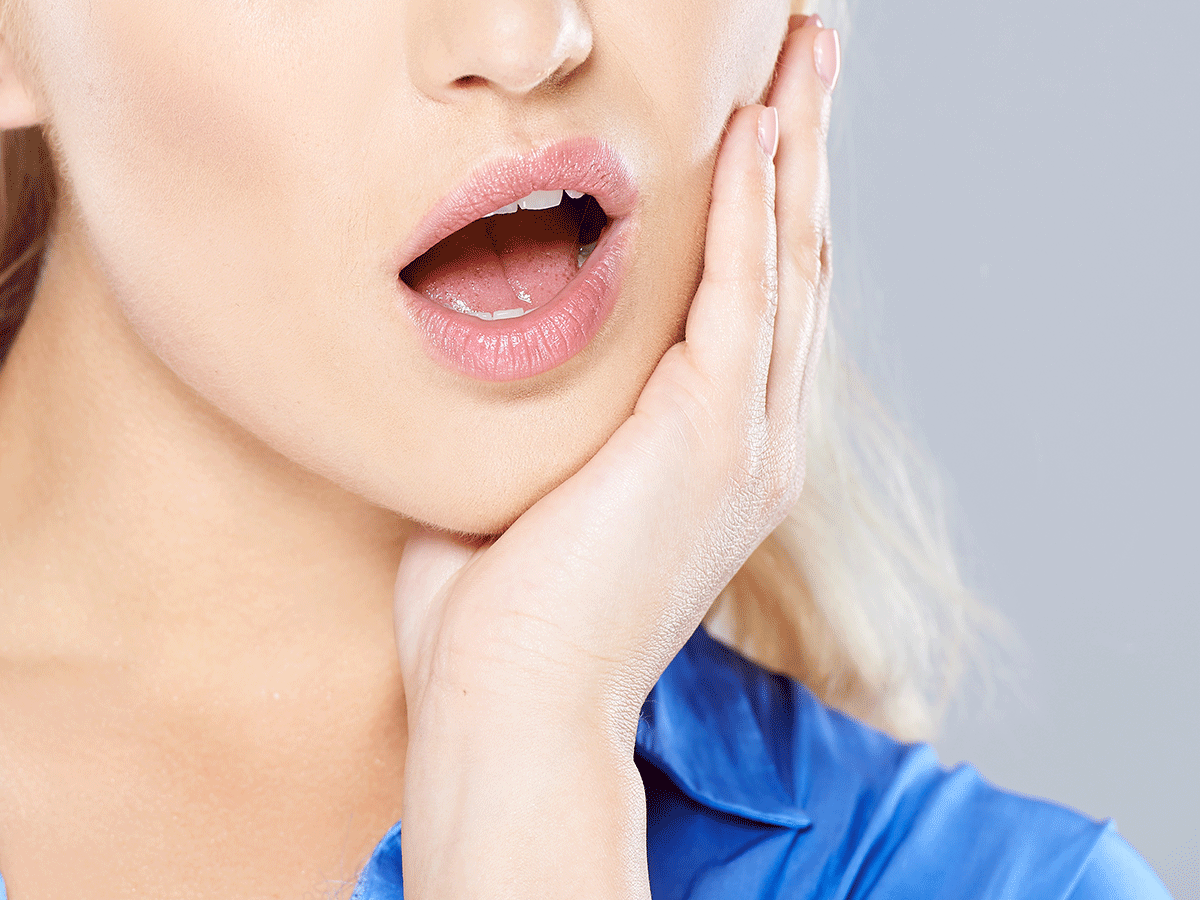What Doctors Need You to Know About TMJ Disorder

Medical experts reveal everything you need to know about how to prevent jaw pain and the types of treatments available, including Botox.
You wake up in the morning and let out a big yawn. After you yawn a couple of times, you notice you’re experiencing soreness in your jaw. Could it be something you ate the night before? Or could it be you’re grinding your teeth in your sleep?
The truth is it can be all of the above. However, if you notice your jaw pain is consistently happening while you chew, speak, or swallow, you’re more likely to have a temporomandibular joint and muscle (TMJ) disorder. The prevalence of TMJ disorders is five to 12 percent, with the condition more common in younger people than older people, and more likely in women than men, according to the National Institute of Dental and Craniofacial Research (NIDCR).
What’s a TMJ disorder?
Your TMJs are joints that connect your jawbone to your skull on both sides of your face. TMJ disorders are considered a type of temporomandibular disorder (TMD). They can cause pain in your jaw joint and in the muscles that control chewing, speaking, and swallowing. Each TMJ contains a disc between the ball and socket for cushion when your jaw opens, rotates, or glides, according to the NIDCR. There are many potential causes of TMJ disorders, including arthritis of the TMJ, injury to your jaw area, a dislocated disc in your TMJ, a tooth or jaw misalignment, stress, and teeth grinding, according to the Canadian Dental Association.
TMJ disorders are common
If you constantly feel pain in your jaw joints or chewing muscles, you are not alone. “There are plenty of people who have pain or dysfunction in their jaw joint or the attached muscles,” says Karen Raphael, PhD, a professor at NYU College of Dentistry in New York City. “It is a fairly common disorder but it is usually episodic, meaning that the pain seems to come and go. It is often self-limiting, meaning the symptoms go away on their own.”
However, not everyone is so lucky. For some people, the pain and discomfort of TMJ disorders do not resolve on their own with time, Raphael says. When the pain lasts for several months or longer and seems to get worse, it’s time to see a doctor or dentist who specializes in treating TMJ, she says. (Here are the secrets your dentist won’t tell you.)
TMJ disorder often occurs during your 20s if there is no known cause such as an accident to the jaw. It often appears spontaneously after late adolescence, according to Raphael. As previously stated, women are disproportionately affected by jaw pain. However, exactly, why this occurs, is not fully understood yet. “These disorders are clearly more common in women than men, and women are also more likely to seek care for TMJ than men,” explains Raphael.
What exactly causes TMJ disorders
Raphael says that research supports the concept that TMJ disorders are caused or exacerbated by much more subtle kinds of activities like tooth-to-tooth contact over long periods of time. “Tooth-to-tooth contact during the day is more common in people with TMD,” she says. “It is this low level of muscle activity over long periods that most likely contributes to the ongoing pain.”
TMJ can also be driven by anxiety. “We often take out anxiety on our teeth when we sleep by clenching and grinding,” says Saul Pressner, DMD, a dentist in New York City. How do you know if you grind your teeth? You likely wake up with jaw pain and tenderness in the a.m., Dr. Pressner says.
Dentists can diagnose TMJ disorders
Dentists are trained to spot more than just cavities—they can also diagnose TMJ disorder. They often check your joints and muscles for tenderness, clicking, popping, or difficulty moving during your routine dental examination, says Dr. Pressner. “I diagnose TMJ disorders by feeling the jaw area in front of the ears and listening for clicking upon open and closing,” he says. “I also feel chewing muscles to see if they are tender when I touch and press.” Dr. Pressner says headaches, especially in the morning, may indicate a TMJ disorder. Your dentist might also suggest an X-ray to make the call, he says.
TMJ disorder has plenty of treatment options
When it comes to treatment, less is more. TMJ often resolves on its own, Raphael says. Treating your pain by eating soft foods, using ice packs or heat, and avoiding extreme jaw movement such as chewing on pencils or gum chewing is often enough to relieve the pain, she adds. Anti-inflammatory drugs like ibuprofen can also be helpful. Relaxation methods such as meditation and other techniques that relax your muscles are also helpful, Raphael notes.
What also helps a lot is a resting jaw position, according to Raphael. Lips together, teeth apart, jaw relaxed, she instructs. “This is a very good adage, and practise saying that to yourself and doing it will probably help,” Raphael says. “Write it down on sticky notes and place them on your mirror and refrigerator to remind yourself to be conscious of your jaw position.”
Not all treatment options are created equal
There are other treatments offered by dentists for TMJ disorders, including oral splints, also known as bite guards. But, some research suggests they are unlikely to be more effective than jaw exercises and other self-management techniques. Raphael and others have conducted clinical trials on oral splints and found they help just a little or not at all, on average. Think twice about bite plates, says Raphael. “There is very little evidence that these are effective, and soft bite plates or other methods that try to change the way you are biting down your natural bite can cause damage.” Her advice? “If you are using a bite plate and it seems to be helping, there is no harm done, but if it seems to make things worse, stop.”
The NIDCR suggests practising gentle jaw stretching and relaxing exercises to increase jaw movement and decrease pain. Your doctor, dentist, or a physical therapist can recommend exercises that may help alleviate your TMJ pain. (Psst: These are the questions you should be asking your doctor at your next visit.)
Also, Dr. Pressner suggests to avoid gum chewing, which can make jaw pain worse. Gum chewing can tire out the muscles and ligaments in your jaw and put stress on them, causing or worsening pain, he says.
Botox can also provide jaw pain relief
One treatment option is also botulinum toxin, known as the brand name drug Botox. Yes, the popular wrinkle-busting injection, can also be used to alleviate TMJ disorders, says Dara Liotta, MD, a facial plastic and reconstructive surgeon in New York City. This is an off-label use which means that the Food and Drug Administration (FDA) has not approved Botox and other neuromodulators to treat TMJ disorders. But the studies are ongoing.
“Botox can be used both functionally to weaken the masseter muscle, which is the main teeth-grinding muscle, and improve the pain of TMJ from teeth grinding, or cosmetically to thin the masseter muscle and take away a square look to the angle of the jaw from an overworked masseter muscle, softening the look of the lower face,” Dr. Liotta explains.
Results are fully evident in seven to 10 days and last for about six months on average, she says. Since it is not FDA approved, insurance is unlikely to cover the cost associated with this treatment.
 What You Need to Know About Botox" width="295" height="295" />
What You Need to Know About Botox" width="295" height="295" />





